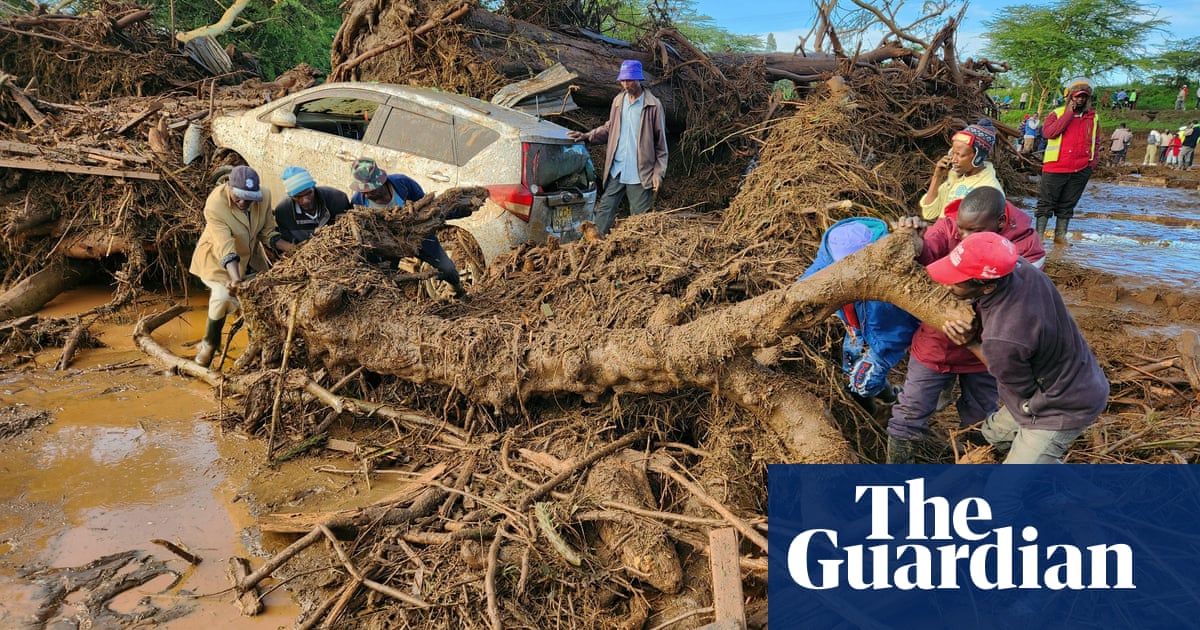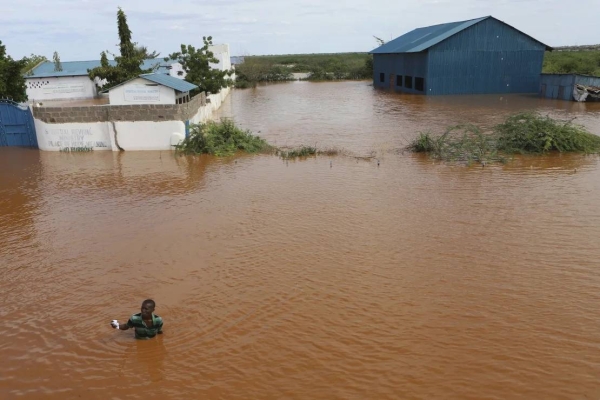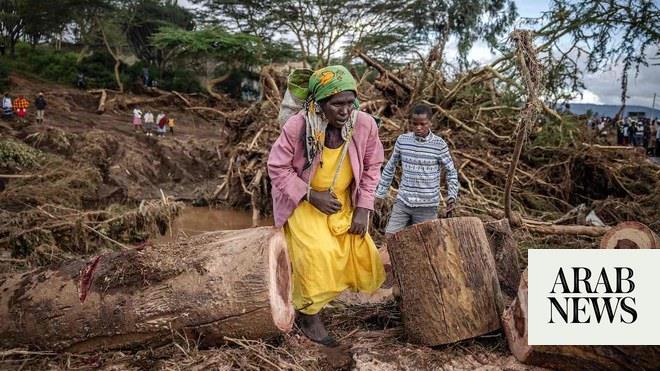
At least 45 people died when a makeshift dam burst its banks near a southern town in Kenya’s Rift valley in the early hours of Monday, police said, as torrential rains and floods hit the country.
The disaster raises the total death toll over the March-May wet season in Kenya to more than 100, as heavier-than-usual rainfall pounds east Africa, compounded by El Niño weather pattern.
Isaac Mwaura, a government spokesperson, estimated that the death toll was 103 people, “with the Rift Valley being the worst hit”. In a post on X, Mwaura said 185,297 had been displaced adding that search and rescue operations were ongoing as well as efforts to support people.
Residents said the dam burst in the dead of night, sending water gushing down a hill and engulfing everything in its path. The deluge cut off a road, uprooted trees and washed away homes and overturned vehicles.
“We heard what sounded like an earthquake and roars like a moving train,” said Margaret Wangechi, 52, a teacher.
A senior officer at Nakuru County police headquarters told AFP by phone that 45 bodies had been recovered so far, while the Nakuru governor, Susan Kihika, said 110 people were being treated in hospital.
Rescuers were digging through the debris, using hoes and in some cases their bare hands in a desperate search for survivors.
“We collected some of the bodies held by trees and we don’t know how many are under the mud,” said Stephen Njihia Njoroge, who was involved in the emergency efforts.
The disaster occurred at Old Kijabe dam, a hillside barrier formed naturally over decades after railway construction work by Kenya’s former British colonial rulers.
The Red Cross has set up a desk at a local school to help families find lost relatives.
Kenya’s interior minister, Kithure Kindiki, said the government had directed security and intelligence officials to “inspect all public and private dams and water reservoirs in their jurisdictions within 24 hours … [and] recommend cases [for] compulsory evacuation and temporary resettlement”.
He said on X that authorities would arrest people engaging in “risky behaviour”, including motorists attempting dangerous crossings and anyone seeking to transport “passengers across flooded rivers or storm water by unsafe canoes or boats”.
His comments came after a boat packed with people capsized at the weekend in flooded Tana River County in eastern Kenya. The Kenya Red Cross said it had retrieved two bodies and rescued 23 people. The government said search and rescue efforts there were ongoing.
Video footage shared online and on television showed the crowded boat sinking, with people screaming as onlookers watched in horror.
In the south-eastern Makueni county, footage circulating on social media showed a truck full of people plunging into a river shortly after it attempted to make a dangerous crossing in powerful currents. Local media reported that the Makueni deputy governor, Lucy Mulili, said 14 people had been rescued and eight bodies recovered after the incident.
Schools have had to remain shut after midterm holidays, after the education ministry announced on Monday that it would postpone their reopening until 6 May because of the rains.
The monsoons have also wreaked havoc in neighbouring Tanzania, where at least 155 people have been killed in flooding and landslides.
In Ethiopia’s capital, Addis Ababa, flooding claimed the lives of four people on Monday, according to the Fire and Disaster Risk Management Commission.
A woman and her baby died in the Rwandan capital, Kigali, on Sunday when heavy rainfall caused their house to collapse, police said.
In neighbouring Burundi, one of the world’s poorest countries, about 96,000 people have been displaced by months of relentless rains, according to the UN and the government.
Uganda has also had heavy storms that have caused riverbanks to burst, with two deaths confirmed and several hundred villagers displaced.
Monday’s dam tragedy comes six years after a similar incident at Solai, also in Nakuru County, killed 48 people. The May 2018 disaster involving a private reservoir on a coffee estate also followed weeks of torrential rains.
El Niño is a naturally occurring climate pattern typically associated with increased heat worldwide, leading to drought in some parts of the world and heavy rains elsewhere. Commenting on the severe weather, Jagan Chapagain, the secretary general of the International Federation of Red Cross and Red Crescent Societies said: “As of 23 April 2024, these rains have already affected hundreds of thousands of people.”
Late last year, more than 300 people died in rains and floods in Kenya, Somalia and Ethiopia, just as the region was trying to recover from its worst drought in four decades that left millions of people hungry.
The UN’s World Meteorological Organization said in March that the latest El Niño was one of the five strongest ever recorded.












